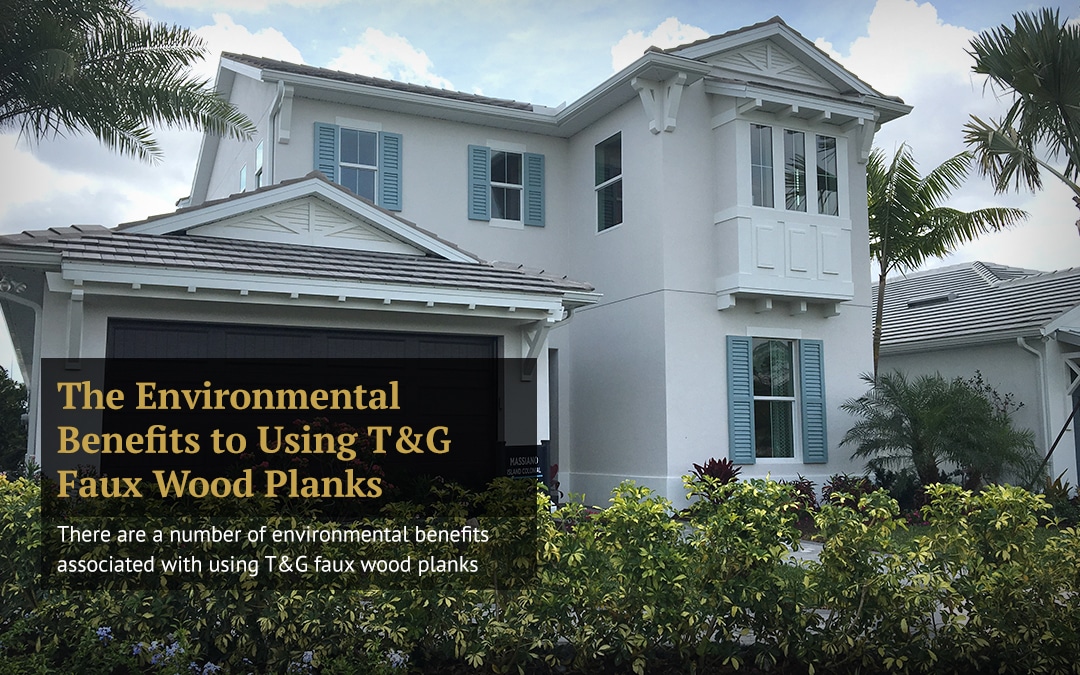Tags: Corbels, Decorative Wall Panels, Tongue and Groove, Tongue and Groove Ceiling, Wood Planks
With a phrase like “faux wood”, it’s easy to imagine synthetic, chemically-ridden material that’s toxic for the environment.
But the term can be misleading. It can also lead plenty of people to assume that it’s terrible for the environment.
In reality, faux wood has many environmental benefits. Far more than traditional wood material, in fact.
Keep reading to understand how faux wood is better for the environment than traditional wood. After reading, you’ll understand why there’s no reason not to choose faux wood over “real wood”.
Material-Efficiency
To clarify, not all faux wood is “fake wood”. Most faux wood is made of a composite wood material coated with polymer.
That means by using faux wood, you’re not contributing to new resource extraction. In fact, you’re making use of what would otherwise be wasted, leaving you with material-efficient, gorgeous wood finishes without additional environmental impact.
Recyclability
Other faux wood is completely made of PVC/vinyl material. Contrary to popular, mythical belief, vinyl doesn’t produce toxic chemicals. In fact, vinyl is a very eco-friendly material as it’s renewable, recyclable, and non-corroding. It doesn’t cause environmental damage when thrown in a landfill.
And although vinyl can take up landfill space, most vinyl is recycled. Landfills are only microscopically populated with vinyl.
So if you ever decide to retire your vinyl, recycling it will ensure that a new user will put it to good use. Feel free to change the look of your faux wood beams at a minimal environmental cost.
Durability
Faux wood’s environmental benefits don’t stop at its production. You’ll reap its environmental and financial benefits even after purchasing it.
As we’ve covered, faux wood uses eco-friendly materials. But even if you’re picky about limiting material usage, you’ll find that faux wood’s durability and longevity will contribute to that mission.
This is because faux wood endures humid and/or wet weather far better than traditional wood material. Tongue & groove wood planks will further ensure that your planks are protected against tough weather.
This means that while real wood doesn’t fare well in high-moisture areas like the kitchen and bathroom, faux wood can. So if you’re looking into adding woodsy designs to those areas, you’ll want to use faux wood planks instead of real wood.
Otherwise, you could suffer from constant and costly wood replacement/maintenance. Even worse, you’ll risk moldy air pollution that will incur dangerous health risks.
Not only is faux wood produced in an eco-friendly way, but it will also last much longer than traditional wood. All this means that your choice will be cost-efficient and better for the environment.
Reap the Environmental Benefits of Faux Wood!
Finishing this article means that you understand faux wood’s many environmental benefits. There’s little reason not to use it over “real wood”, as it’s more than just eco-friendly. It’s also cost-efficient, versatile, and long-lasting.
Here at Diamond Resin Products, we understand how important a gorgeous, well-executed home design is. That’s why we sell quality faux wood beams and T&G faux wood planks. With our products, you’ll achieve a natural home aesthetic without the pitfalls of traditional wood.
So contact us today to schedule your appointment! You can even check out our home design portfolio to see what faux wood can do for your home.

